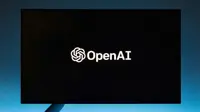GST Council finalises a 5-12-18-28% rate structure
03 Nov 2016
 The GST Council at its meeting today finalised a four-tier GST tax structure of 5, 12, 18 and 28 per cent, with lower rates for essential items and the highest rate for luxury and goods like tobacco and liquor that would also attract an additional cess.
The GST Council at its meeting today finalised a four-tier GST tax structure of 5, 12, 18 and 28 per cent, with lower rates for essential items and the highest rate for luxury and goods like tobacco and liquor that would also attract an additional cess.
Essential items of consumption, including food, which constitute about fifty per cent of the consumer inflation basket, will be exempted from the purview of the Goods and services tax (GST) with a view to keeping inflation under check.
Common use items will attract the lowest rate of 5 per cent, while 12- and 18-per cent slabs will apply for most goods and services, which will again be capped by a top slab of 28 per cent, which will apply for luxury and other top-end goods and services, which will in addition invite a cess in cases of non-essential goods like aerated drinks, tobacco, liquor and luxury goods, including vehicles.
Announcing the decisions, finance minister Arun Jaitley said the highest tax slab will be applicable to items which are currently taxed at 30-31 per cent (excise duty plus VAT).
The amount collected through cess will be used to create a revenue pool that would compensate states for any loss of revenue during the first five years of the rill-out of the GST, beginning 1 April 2017.
Jaitley said about Rs50,000 crore would be needed to compensate states for loss of revenue from rollout of GST, which will subsume a host of central and state levies, including excise duty, service tax and VAT, in the first year.
Jaitley said the cess would cease to exist at the end of five years from a April 2017.
The GST Council decided to tweak the earlier discussed 6-12-18-26 per cent rate structure in a bid to accommodate the demands of states like Kerala for a 40 per cent upper slab.
A decision on the centre's proposal to levy a 4 per cent GST on gold, however, was put off, Jaitley said.
The GST regime, once adopted, would transform the whole of India into a single market and make it easier and simpler for businesses to comply with tax requirement.
The government is expected to seek Parliament's approval for bills during the winter session, which will start later this month. It is, however, likely to face opposition resistance on the rates, which the Congress Party wanted to be capped at 18 per cent.































